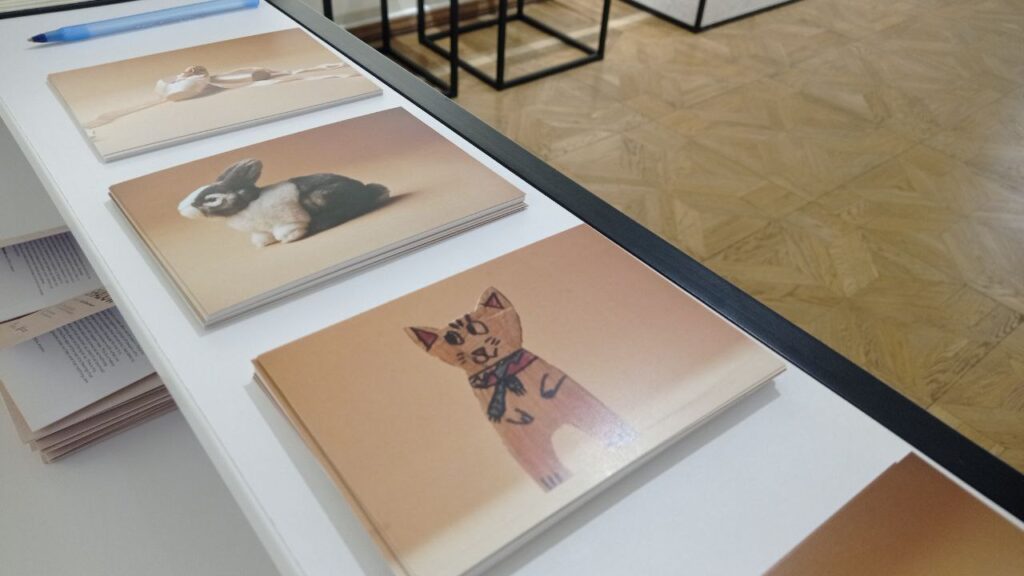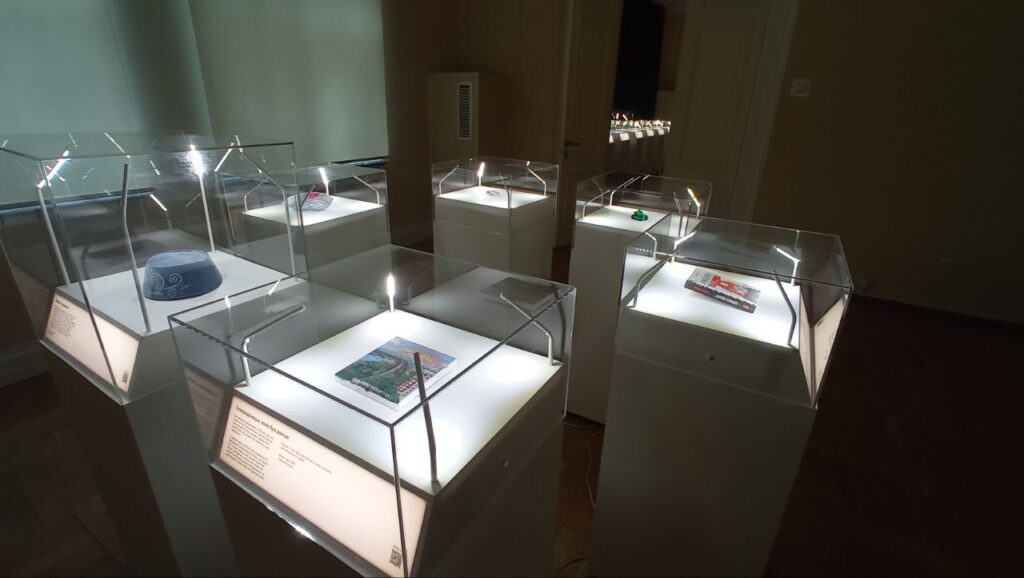Author: Oliinyk Vladyslava
What do a child in Sarajevo in the 1990s and a child in Ukraine today have in common? A historian and student shares how moderating an exhibition at the Museum of War Childhood in Kyiv sparked a personal and academic journey into Balkan history, empathy, and the power of cultural memory. This blog reflects on how museums can connect past and present across borders—and how stories of childhood in wartime can bring people and nations closer together.
Last summer, I had the unique opportunity to moderate a temporary exhibition at the Museum of War Childhood in Kyiv. Although the exhibition was managed by the museum’s Ukrainian branch, moderators like myself had to familiarize ourselves with the institution’s origins in Sarajevo, Bosnia and Herzegovina. The Museum of War Childhood is a relatively young institution—its permanent exhibition opened only in 2017—but its conceptual depth is striking. The idea behind the museum lies in the tension between the uniqueness and universality of growing up during wartime, as first explored in the book War Childhood by Bosnian entrepreneur and author Jasminko Halilović. Halilović transformed his personal experiences as a child during the Bosnian War (1992–1995) into a literary work and, eventually, a cultural institution.
 Photo by Oliinyk Vladyslava
Photo by Oliinyk Vladyslava
As a historian, I was familiar with the basic chronology and causes of the Bosnian War, but I had never examined the conflict on a micro level. During my undergraduate studies, my focus was on the history of visual art in Victorian Britain, and I gave little attention to Central or Eastern Europe. It wasn’t until Russia’s full-scale invasion of Ukraine that I felt a personal urgency to understand the region’s post-Soviet transitions and the independence movements of neighboring countries. The complex and often painful recent history of the Balkans earned my deep respect, but at first, I struggled to see how our experiences were connected.
Encountering the Museum of War Childhood changed that. I began to recognize parallels between the Russian-Ukrainian war and the Bosnian conflict—especially in how children navigate trauma, displacement, and interrupted childhoods during wartime. The museum made these connections tangible, offering a space where individual stories speak across national and temporal boundaries.
 Photo by Oliinyk Vladyslava
Photo by Oliinyk Vladyslava
In my growing curiosity about the Balkans, I chose to join a Central European University specifically because it offered a course on Balkan Studies. Ukrainian universities also offer Central and Eastern European studies, but I realized that to truly understand the region, I needed to learn from the people who live there. Who can speak more vividly about the intricacies of student protests in Serbia than those participating in them? Who can reflect more truthfully on the Bosnian war than those who lived through it? Through my studies and encounters, these questions are finding meaningful answers.
My experience taught me how cultural institutions, like museums, can provide powerful tools for rethinking war, trauma, and identity. Today’s museums can connect the histories of different nations, revealing shared tragedies and common challenges—particularly for children navigating the chaos of war. This renewed focus on the experiences of minors has led me to new research interests and opened a new chapter of European history I had never expected to engage with so deeply. Museums, I’ve learned, can simultaneously build bridges and highlight difference—and in doing so, they provide a space where empathy, inquiry, and healing can coexist.
 Photo by Oliinyk Vladyslava
Photo by Oliinyk Vladyslava
 Photo by Oliinyk Vladyslava
Photo by Oliinyk Vladyslava